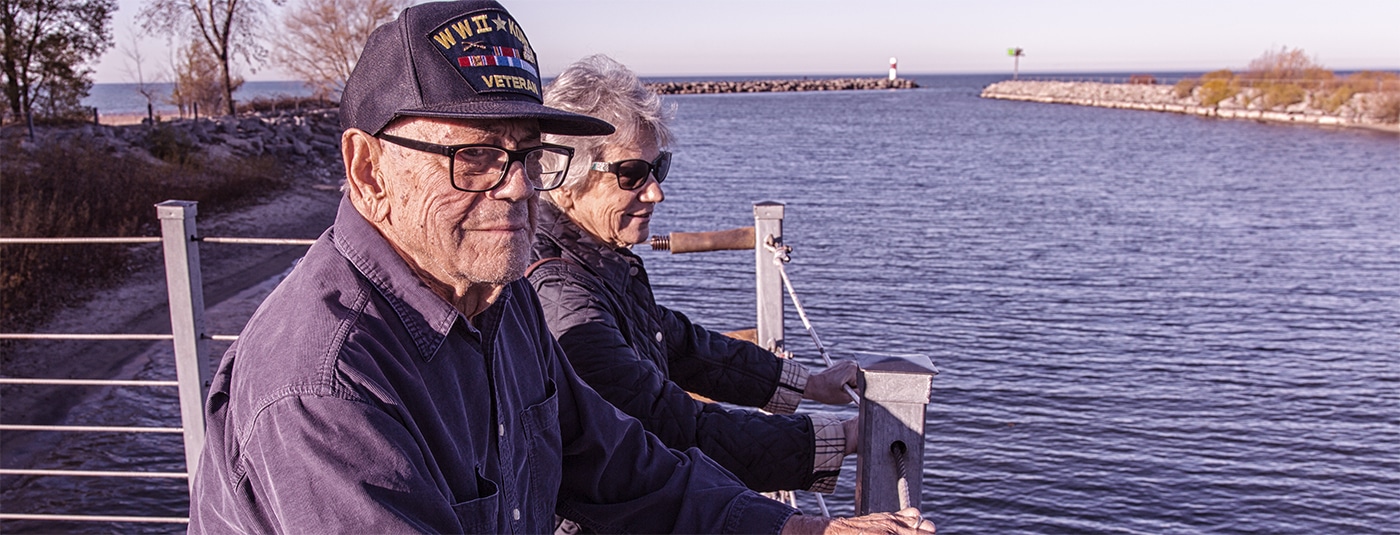A History of Camp Lejeune’s Water Contamination
How the government failed our veterans and how we can help
The Centers for Disease Control and Prevention (CDC) reports that nearly one million veterans and civilians were potentially exposed to the contaminated water supply at Camp Lejeune in North Carolina, during a period of over three decades. The deadly health risks of these pollutants were not identified until years later and victims still suffer the ill effects in the form of various cancers and other severe conditions. Many have died, some decades ago. All may soon be entitled to relief.

What happened at Camp Lejeune, North Carolina?
The U.S. Marine Corp Base Camp at Camp Lejeune was established in 1942, and in 1982 the Marine Corp discovered several volatile compounds in the drinking water supplied by two on-base treatment plants.
Tarawa Terrace (1952 to 1987)
Serving Tarawa Terrace housing and the Knox trailer park, the Tarawa Terrace treatment plant provided customers water contaminated by perchloroethylene and tetrachloroethylene (PCE) as a result of waste disposal from an off-base dry cleaning firm. The Agency for Toxic Substances and Disease Registry (ATSDR) estimates these “PCE concentrations exceeded the current EPA maximum contaminant level of 5 ppb in drinking water from the Tarawa Terrace water treatment plant for 346 months during November 1957-February 1987.”
Further, during the month of February 1985, contaminant levels reached 215 parts per billion (ppb), in considerable excess of the maximum ppb level of 5.
Hadnot Point (1942 to 1985)
Hadnot Point served the main barrack and family housing at Hospital Point, Midway Park, Paradise Point, and Berkeley Manor. Its water treatment plant was “contaminated primarily by TCE (trichloroethylene). Other contaminants in the drinking water included PCE and benzene and TCE degradation products trans-1,2-DCE (t-1,2-dichloroethylene) and vinyl chloride.” The ATSDR reported these toxins came from several sources, including leaky underground storage tanks, waste disposal sites, and industrial spills. Concentrations exceeded EPA levels during August 1953 and January 1985.
In May 1982, contaminant levels reached 1,400 ppb.
"We got a double dose of it. I was a kid (on Camp Lejeune), then I was a man.
I was poisoned twice. So were my brothers." – Joe Walker
Did officials know?
According to Star News Online, Marine Corps spokesman Capt Philip J. Kulczewski said back in 2017, “Drinking water regulations for the chemicals found at Camp Lejeune were put into place in the late 1980's and early 1990's, years after the impacted-wells were shut down in late 1984 and 1985.”
However, Star News also points out:
The Navy's Bureau of Medicine and Surgery issued "The Manual of Naval Preventive Medicine” in 1963, including drinking water regulations.
"The water supply should be obtained from the most desirable sources which is feasible, and effort should be made to prevent or control pollution of the source," it reads.
Then in 1974, Base Order 5100.13B stipulated that organic solvents -- like the ones found on Camp Lejeune -- were hazardous in drinking water…Documents released in 2012 showed the Marines knew some water wells on Camp Lejeune were contaminated as early as October 1980.
“I've lost two grandparents, two uncles, I'm losing my father. I don't know what this stuff has done to them.” – Jan Trim
How did the Camp Lejeune water contamination affect veterans and their families?
These two contaminated wells were not shut down until the mid to late 1980s. Military members and their families began experiencing cancer and other illnesses at alarming rates. In fact, VetsHQ reports that Marines from Camp Lejeune had a:
- 35% higher risk of kidney cancer
- 42% higher risk of liver cancer
- 47% higher risk of non-Hodgkin’s lymphoma
- 50% higher risk of ALS
- 68% higher risk of multiple myeloma
The VA associates the following conditions with the contaminated groundwater:
- Esophageal cancer
- Bladder cancer
- Breast cancer
- Lung cancer
- Kidney cancer
- Adult leukemia
- Non-Hodgkin’s lymphoma
- Multiple myeloma
- Myelodysplastic syndromes
- Hepatic steatosis
- Renal toxicity
- Female infertility
- Miscarriage (exposure during pregnancy)
- Scleroderma
- Neurobehavioral effects
Because Camp Lejeune was open for over three decades, the number of potentially exposed service people, families, and contractors could be over a million. The $2.2 billion allotted by the federal government back in 2017 cannot possibly reimburse the victims for what they have endured, in both physical illness and years of fighting to get the justice to which they are entitled.
Legal guidance for Camp Lejeune water contamination victims
If you served or resided at Camp Lejeune in North Carolina between 1953 and 1987 for at least 30 days, you may have a potential legal claim for your injuries and conditions. The attorneys at McGowan, Hood, Felder & Phillips want to help. When you fill out the client form, it ensures you receive updates on the Camp Lejeune Justice Act and registers you to have your claim filed.
We serve veterans and their loved ones throughout South Carolina and the surrounding areas.
You fought for your country – let us fight for you.
